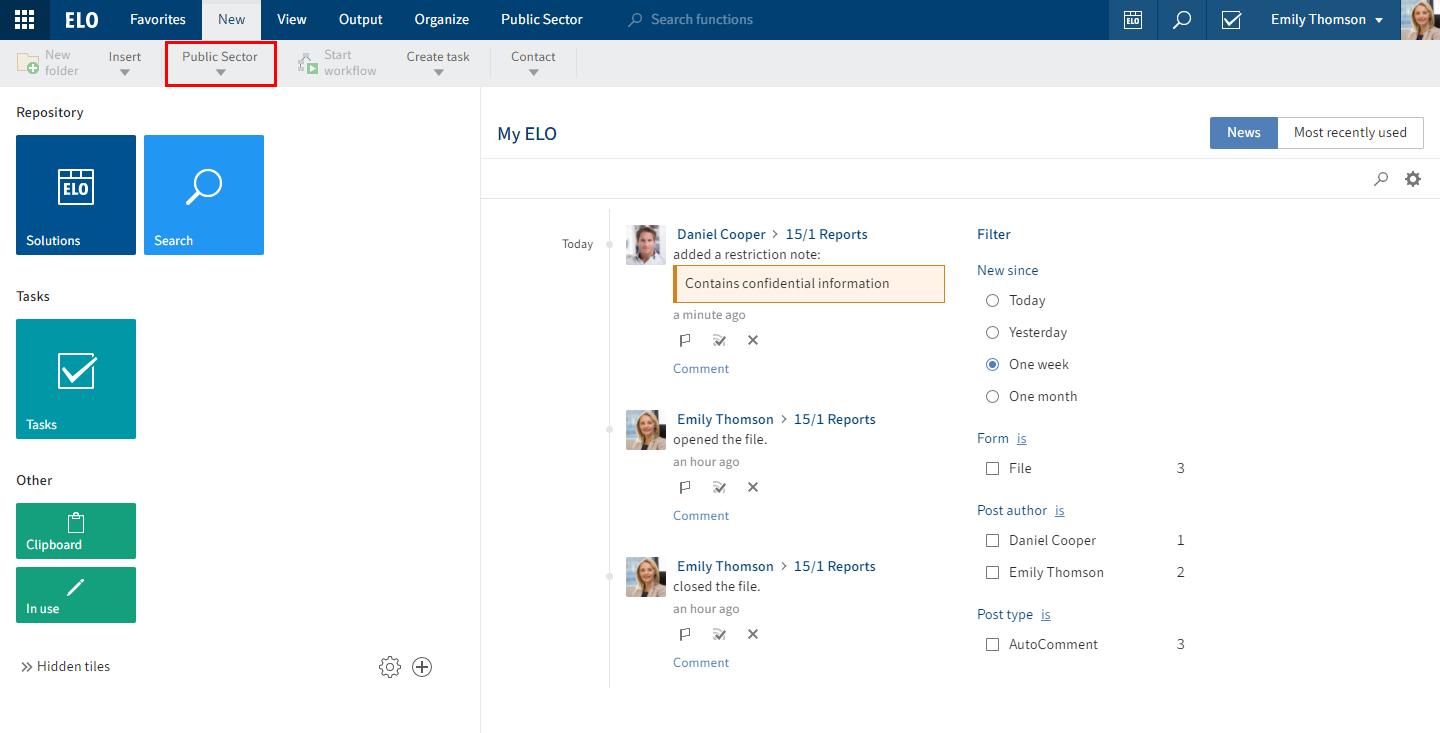# Basics
# Basic principle
Business Solution ELO Public Sector is designed to meet the special requirements of government and public authorities.
ELO Public Sector covers the process of managing official records.
You can use ELO Public Sector to digitalize your filing plan in ELO. In your filing plan, you can create and manage files. You can link your digitalized files to your physical files using QR codes as needed.
Reports help you keep an overview of your filing plan and your files.
Cases and circulation folders also help you map routines.
# General note
ELO Public Sector works with the following clients:
- ELO Web Client (opens new window)
- ELO Java Client (opens new window)
- ELO Desktop Client (opens new window)
Information
In this documentation, we use screenshots from the ELO Web Client. The standard ELO Public Sector solution is shown.
# Requirements
Your administrator must have configured ELO Public Sector for you.
# Program interface
You will find ELO Public Sector functions in the following areas:

Fig.: Business Solution ELO Public Sector program interface
1 'Public Sector' group on the 'New' tab
With the functions in this group, you create elements in the filing plan.

Fig.: 'Public Sector' tab
2 'Public Sector' tab
With the functions on this tab, you can make changes to the filing plan or request changes, start signature processes and directives, create reports, and automatically generate record objects.
# Filing plan
You can reach your filing plan via the repository.
The filing plan contains files with different statuses. You will recognize the statuses based on the color of the files:
- Green: The file is open and can be edited. Files can be closed and re-opened.
- Red: The file is closed and can no longer be edited. A closed file can be re-opened on request.
- Yellow: The file is locked and should no longer be edited. A locked file can be unlocked.
File references are generated automatically when creating files.
Fig.: Part of a filing plan with file, case, and record objects
Files can be structured differently depending on your needs. They can be organized in file groups, or contain sub-files, cases, documents, or record objects.